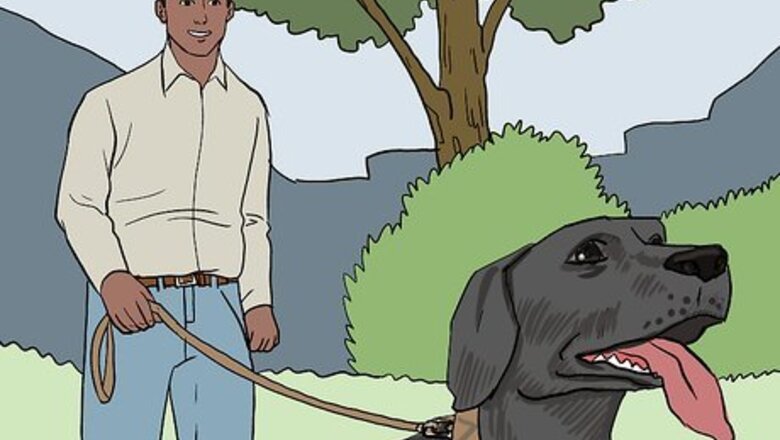
views
- Give your dog cool water to help them cool off. Or, move them to a cool room and turn on a fan.
- If your dog is anxious, move them to a calm, quiet room and keep them company. Pet them, give them treats, or play soothing music.
- Visit your vet if your dog is panting and acting abnormal, like being less active and hiding. This can be a sign of an underlying condition.
Don’t worry about healthy panting.
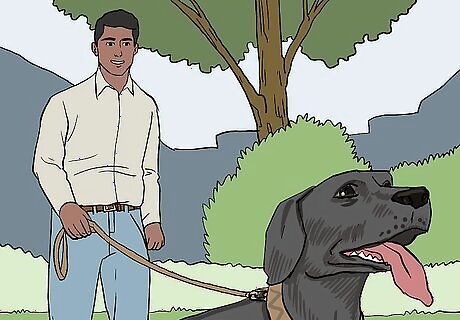
Panting after exercise is completely normal. Dogs pant for the same reason that people sweat—to cool off. If your dog has been active or it’s a little warm outside and you’re going on a walk, the panting isn’t anything to worry about. Dogs also pant when they get excited. If your dog is wagging their tail or staring at a squirrel outside, they’re most likely fine. Nobody knows your dog like you do. If they're acting normal and not showing any symptoms besides panting, they're likely okay.
Give your dog some water.
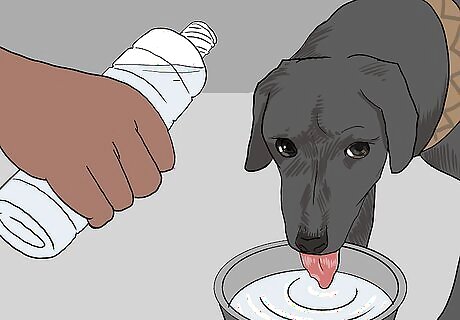
The quickest way to put an end to healthy panting is cool water. When dogs pant, the water inside of their lungs and nose evaporates to help them cool off. Giving them water will help them replenish this reserve and get back to normal. If it’s hot out, your dog won’t stop running around, or they’re excited by visitors, keep a big bowl of cold water nearby so they can grab a drink whenever they need it. If your dog stops panting after a bowl of water, there’s no need for concern. Bring a water bottle and a cup with you if you’re taking your pup on a hike or you’re headed to the park for a game of fetch.
Move your dog to a cool environment.
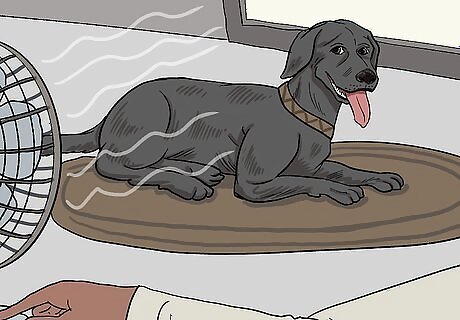
If it’s warm out and water isn’t helping, take your pup somewhere cool. If you’re playing fetch at the park or you’re taking a walk on a hot day and they start panting excessively, it’s time to go home. Take them to a cool room and turn a fan on. If it’s hot indoors but it’s cool outside, take them out for some fresh air. Taking your dog somewhere colder when they’re panting will make it a lot easier for them to get back to normal. If giving your dog water and taking them somewhere cool doesn’t relieve the panting, they may be anxious or overly excited. This could also be the sign of an underlying condition; if the panting doesn’t dissipate soon after you’ve tried this, contact a vet.
Help your dog relax if they’re anxious.
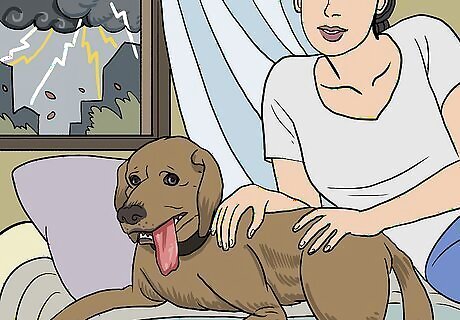
Thunderstorms, fireworks, and strangers can all cause your dog to pant. If your furry friend is anxious, take them somewhere calm and start petting them. Give them a treat or two, put on some soothing music, and let them relax. They may also get anxious if they haven’t been exercised enough and they have a ton of built-up energy. If this is the case, take them on a walk or spend a few minutes playing with them. If your pup has a favorite spot in your home where they like to relax, take them there. If your dog is crate trained and they spend the night there, leading them into the crate and hanging out nearby may be a good solution. This will give your dog a sense of safety. Don’t do this if they have any negative associations with the crate, though. Other signs of stress include: yawning, whining, hiding, a tucked tail, flattened ears, and crouching down.
Investigate unhealthy panting immediately.
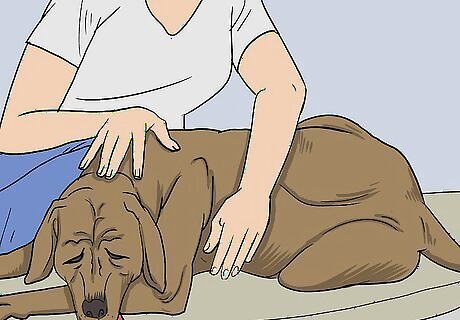
Unhealthy panting comes out of nowhere and is often paired with lethargy. It is also cause for concern if the panting sounds abnormal, or they’ve been acting a little strange lately (i.e. not playing, hiding, or drooling a lot). Consider whether the panting matches the temperature or level of activity. If it’s cold out or your dog starts panting while they’re sleeping, you need to investigate the problem. Your dog may not need an emergency vet visit depending on the source of the panting. Even if it isn’t an emergency situation though, you do need to take them in for a checkup soon just to be safe.
Watch for signs of dehydration.
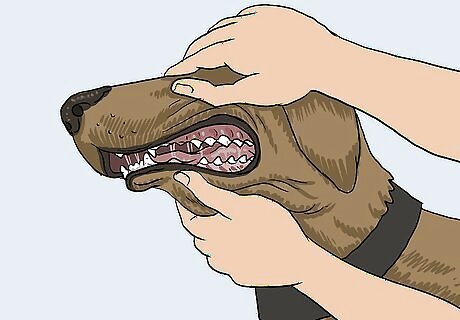
Open your dog’s mouth to see if their gums are dry and sticky. These are both signs of dehydration. Also, gently pinch your dog's skin to see if it feels dried out, stiff, or firmer than it normally is, which can be a sign of dehydration. Check their nose to see if it’s totally dry. If your dog hasn’t had water recently and any of these symptoms fit, give them some water now. Sometimes, your dog will bounce right back soon after they’re finished drinking. However, if the problem doesn’t resolve itself, it’s time to go to the vet. Other signs of dehydration include a loss of appetite, vomiting, lethargy, sunken or dry eyes, and thick saliva.
Check for heat stroke if it’s hot out.
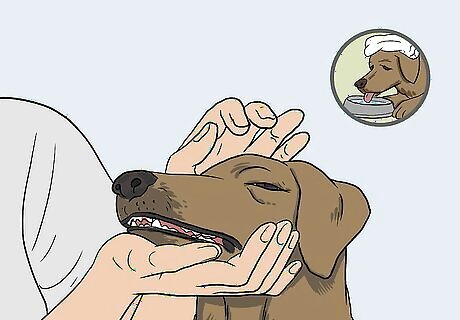
Look for glazed eyes, lethargy, and a rapid heartbeat. Open your dog’s mouth to see if their tongue is deep red or purple. If it’s hot out and your dog has any of these symptoms, they may be experiencing heatstroke. Move your dog to a cooler area and put a cold towel on their head. Pour cool water over their body and give them some ice or cold water. Take your dog to the vet immediately after you’ve cooled them off. To prevent heat stroke, limit exercise on hot days, make sure they have plenty of water, and keep them in the shade. You can take your pup’s temperature with a rectal thermometer to confirm. A dog’s normal body temperature is 101.5 °F (38.6 °C). If they’re over 105–106 °F (41–41 °C), they’re at risk of heatstroke and they need to see a vet immediately.
Look for injury if they’re in pain.
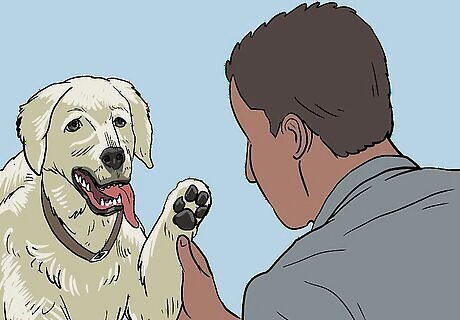
Panting combined with trembling, limping, or whining is a sign of pain. Your pup may have glass in their paw or a cut somewhere on their body if they’re panting excessively. Inspect your dog and check their paw pads for tears, glass, or splinters. Run your hands gently through their fur to look for growths or cuts. If they’re injured, this is probably the source of the panting. If their paw is actively bleeding and it’s a minor wound, cover it with a clean towel and apply pressure to stop the bleeding. If something is stuck in their paw or skin, take them to the vet to have it extracted. If the wound is bleeding excessively, in a sensitive location, or you find a growth, take them to the vet immediately.
Consider what your dog may have eaten.
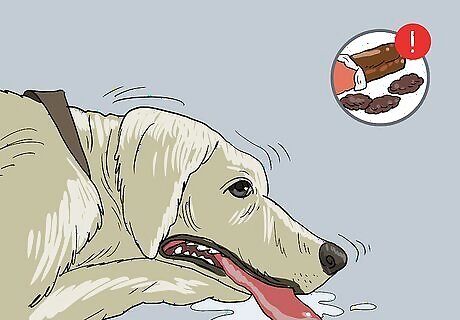
Panting can also be a sign of poisoning or an allergic reaction. If your pup was rummaging around in the trash or licking plants at the park and they just start panting a lot out of nowhere, take them to the vet now for immediate treatment. Chocolate, raisins, certain plants, antifreeze, rat poison, and a variety of other chemicals are toxic to dogs, so you need to see an emergency vet to get treatment now. If your dog is also vomiting, has diarrhea, is acting restless, or peeing a lot, it’s a strong sign that they’ve eaten or licked something that’s making them sick. If you’ve had a close eye on your dog and you didn’t see them eating or licking something they weren’t supposed to, it’s very unlikely that poisons or allergic reactions are causing the panting.
See a vet if the panting won’t stop.
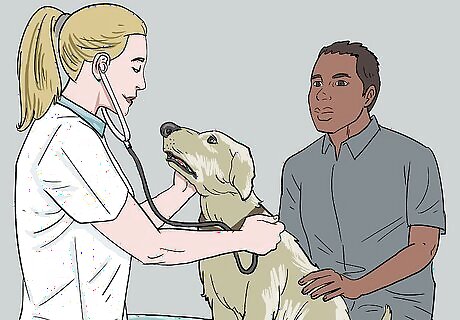
Panting can be a symptom of a variety of conditions. Unfortunately, you can’t fix these problems yourself. If your furry friend keeps panting or the frequency of their panting fits won’t stop, just see a vet. The sooner you get some help, the faster your dog will be back in tiptop shape. Excess panting can be a sign of: Heart issues Lung disease Anemia Cushing’s disease




















Comments
0 comment